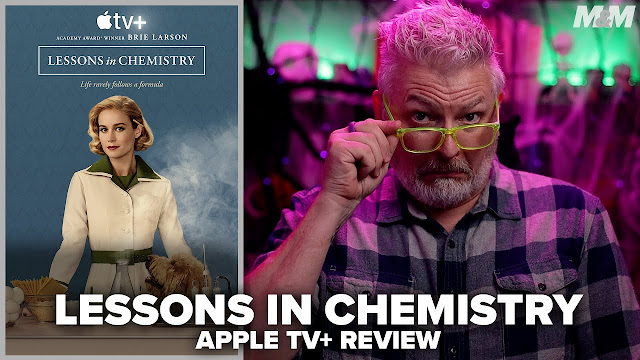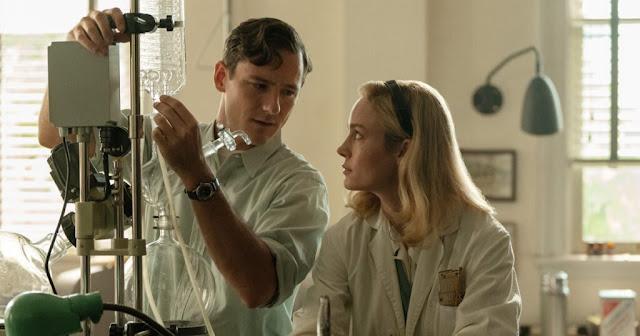In Lessons in Chemistry, Bonnie Garmus’s wildly popular, 1960s-set debut novel, Harriet is the nosy neighbor of cohabitating chemists Calvin Evans and Elizabeth Zott. Blunt-spoken and unhappily married to a caricature of a bad husband — Garmus describes him as “dull” and “stupid” with “a thicket of body hair” — Harriet becomes both the regular babysitter for Mad, Elizabeth and Calvin’s daughter, and a representative of every unfulfilled white woman who discovers new possibilities past what is supposed to be her prime.
In Lessons in Chemistry, the Apple TV+ series based on Garmus’s book, Harriet is scarcely any of those things. She’s still a neighbor of the two scientifically gifted protagonists. But she’s also a Black woman living in a Black neighborhood (minus Calvin and Elizabeth, the only white people residing closeby); an intelligent, aspiring lawyer who’s happily married to a military doctor; and a mother of four young children trying to pursue her own very active dreams.
This reimagination of Harriet, the most significant departure from the original text in this handsome if unchallenging adaptation, forces the Apple TV+ Lessons to tackle something the book does not: the civil-rights movement that brought racial tensions to an unignorable boil during the era in which this story takes place.
In Lessons in Chemistry, Bonnie Garmus’s wildly popular, 1960s-set debut novel, Harriet is the nosy neighbor of cohabitating chemists Calvin Evans and Elizabeth Zott. Blunt-spoken and unhappily married to a caricature of a bad husband — Garmus describes him as “dull” and “stupid” with “a thicket of body hair” — Harriet becomes both the regular babysitter for Mad, Elizabeth and Calvin’s daughter, and a representative of every unfulfilled white woman who discovers new possibilities past what is supposed to be her prime.
In Lessons in Chemistry, the Apple TV+ series based on Garmus’s book, Harriet is scarcely any of those things. She’s still a neighbor of the two scientifically gifted protagonists. But she’s also a Black woman living in a Black neighborhood (minus Calvin and Elizabeth, the only white people residing closeby); an intelligent, aspiring lawyer who’s happily married to a military doctor; and a mother of four young children trying to pursue her own very active dreams.
This reimagination of Harriet, the most significant departure from the original text in this handsome if unchallenging adaptation, forces the Apple TV+ Lessons to tackle something the book does not: the civil-rights movement that brought racial tensions to an unignorable boil during the era in which this story takes place.
The performances are just as carefully considered. Larson plays Elizabeth with a firm jaw, a stern demeanor, and an inability to suffer fools that animates every clipped sentence and brisk exit from a frustrating conversation. When she begins to fall for Calvin, instead of softening all her edges, Larson becomes wide-eyed with wonder, a posture Pullman matches.
They gaze at each other with affection, but also grateful shock, as if they can’t believe they’ll each get to study such fascinating specimens — each other — for the rest of their lives. Young Alice Halsey also deserves credit for portraying their elementary-school-age daughter, Mad, with so much sincerity that her intelligence and advanced vocabulary come across as the natural product of her genetic make-up rather than mere precociousness.
And then there’s Aja Naomi King, who gives Harriet such quiet power and warmth of spirit that you want to know more about her than the series is willing to tell. There’s a moment in episode six, when the supposedly progressive Elizabeth says she can’t join Harriet at a sit-in to protest a highway targeted for their neighborhood, when Harriet finally explodes.
“You always talk about the things keeping women down, but have you looked at your audience lately?” she shouts at Elizabeth, referring to the white ladies who populate the Supper at Six studio audience. Would a Black woman in the early ’60s have felt empowered to say this to a white person, even if she’s a friend?
That’s debatable, but King makes you believe that Harriet would, and that maybe Lessons in Chemistry will contend with Elizabeth’s white privilege in a surprising way. But almost as soon as the issue is raised, Lessons in Chemistry races to redeem its heroine, lest its viewers have to sit in discomfort for too long.
As a fresh exploration of female empowerment, Lessons in Chemistry falls short, in part because its story seems pretty familiar. Other series set in bygone decades have depicted similar scenarios and themes — men who scoff at and sabotage women’s ambitions, the overwhelming grind of new motherhood, puritanical attitudes about marriage and female sexuality — with a stronger sense of focus.
(Good Girls Revolt, Mrs. America, Mad Men, and GLOW all come to mind). While entertaining and well-made, this series doesn’t offer any new insights into the gender dynamics that stifled so many women in the pre-Ms. magazine era, other than illustrating how meaningful it is when women pigeonholed as moms or wives are treated like the intellectually rigorous human beings they are. That’s not nothing. But it’s not enough to make Lessons in Chemistry as vital as it seems to think it is.
There is also a reluctance to streamline Garmus’s novel and jettison some of its overly cute diversions. That includes a chapter that is told entirely from the point of view of Six-Thirty, the beloved dog that belongs to Calvin and Elizabeth, and is re-created in episode three with B.J. Novak giving voice to the shaggy pet’s thoughts.
It’s a tonal shift the series doesn’t need, especially when Lessons in Chemistry goes to such lengths to build new characters worth caring about. As pleasing as it is to watch, you can’t help but question the judgment of a show that could have given more screen time to King’s Harriet but instead cedes it to a dog with the voice of Ryan from The Office










0 Comments